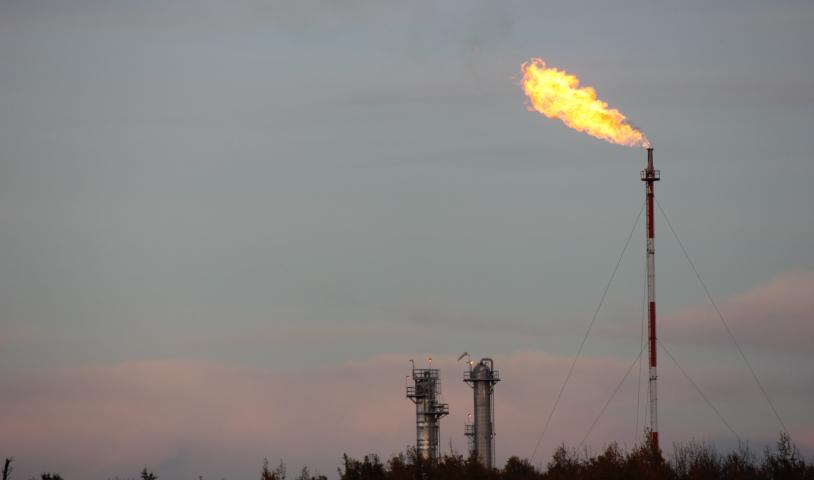Exclusive: Run‑of‑river power projects kill fish
Sunday, March 11, 2012
The Mamquam River pours cold and fresh off the Coast Mountains, forming pools and canyons and chutes of white water on its way to the Squamish River and Howe Sound.
It was a natural place for federal fisheries biologists to assemble on an August 2010 weekend for swift-water safety training. Like the river itself, however, their exercise took an expected turn.
Rather than watch the Mamquam flow predictably to the sea, the biologists were dismayed to witness the water levels fluctuate wildly — and with dire consequences.
Young steelhead were dying, stranded without water.
The culprit? The Capital Power run-of-river hydro plant, located just upstream.
The independent power industry bills itself as green, sustainable and environmentally responsible.
But more than 3,000 pages of documents obtained separately by The Vancouver Sun and the Wilderness Committee through freedom of information requests show water-flow fluctuations caused by run-of-river hydro projects are killing fish — and the problem is not isolated.
While independent power producers insist their sector remains the cleanest energy option, the documents bolster environmentalists’ long-standing concerns about the industry.
“I’m seeing significant environmental problems,” said Gwen Barlee, policy director for the Wilderness Committee. “And that runs completely counter to what the companies are saying, which is essentially, ‘Trust us with your wild rivers and there won’t be any problems.’ ”
The documents detail repeated short-term fluctuations in water flows, resulting in the stranding and killing of juvenile fish downstream of two plants, Capital Power on the lower Mamquam and Innergex on Ashlu Creek, another tributary of the Squamish.
In one incident on Ashlu Creek, on May 8, 2010, 166 salmon and trout fry became stranded due to rapidly dropping water levels. Fewer than half of the fry could be returned to the creek alive. Another 39 fry died during a stranding on April 20, 2011.
Neither hydro operation has been charged.
At present, there are 50 private hydro projects in operation and selling power to BC Hydro, half of them in the south coast region. Another 62 are in the planning or construction phase. Applications are outstanding for another 635 water-power projects, although not all are expected to be approved.
Run-of-river projects produce electricity by diverting river water — typically in a steep canyon — and sending it through an underground pipe to a powerhouse. The water is then returned to the river.
The provincial and federal governments work together to set regulations for run-of-river projects, including general minimum stream flows and specific rates for short-term fluctuations — known as ramping.
Ramping may occur for reasons such as the shutdown of a power plant for maintenance or an unanticipated failure.
During this process, water levels rise and fall in the river, but power producers are supposed to ensure these changes are made gradually — a maximum 2.5 centimetres per hour to prevent stranding of fry that inhabit the shallow edges of the river downstream.
Water is money to this fast-growing industry. The volume of water that power plants are required to leave in streams on a continuing basis as well as the rate of short-term ramping affect their ability to produce electricity. The more water they have to leave in the river, the less they have for power production.
Companies “argue economic hardship” when it comes to diverting water because of fish, the federal department of fisheries and oceans (DFO) states in minutes of a July 21, 2001, inter-agency meeting on a proposed run-of-river project on the Kokish River on northeastern Vancouver Island.
Government officials face a “significant challenge” to reduce water available for power generation “because proponents are reluctant to reduce revenues,” the minutes stated.
The Kokish example is “not different from other operating projects that have not been accurately managed,” the documents went on to state.
DFO has observed “considerable non-compliance,” and the success rate of complying with in-stream flow requirements “is not very good.”
Adam Lewis, president of Ecofish Research Ltd., a leading consultant to industry and government on run-of-river projects, said all run-of-river power projects have some negative effect on the environment.
Fish living upstream can get sucked into the intake pipes and killed in the turbines, said Lewis, who is also a former director of the Steelhead Society of B.C.
But the larger issue, he suggested, is the potential for power plants to ramp down water levels too quickly and leave young fish stranded and dead for kilometres downstream.
Emerging salmon eggs are especially sensitive in March and April; steelhead and trout in July and August.
The freedom-of-information documents reveal the frustration of provincial and federal bureaucrats with continuing problems at the Ashlu and lower Mamquam plants.
The Capital Power plant, built in 1996 with no requirement for monitoring, continued to be plagued by fish issues well after fisheries biologists first discovered the dead steelhead on Aug. 28, 2010. Capital Power sold the 50-megawatt facility to Atlantic Power, a Boston-based publicly traded company, in November 2011. Atlantic Power refused interview requests from The Sun.
In a letter to Capital Power dated Sept. 9, 2011, federal habitat biologist Francesca Knight and hydrotechnical engineer Vince Busto expressed concern over at least 19 known incidents over the previous 12-month period.
They warned that the death of newly emerged salmonid fry are of “great concern” and demanded that the company operate in a manner that does not destroy fish or their habitat.
The federal fisheries department refused to allow anyone to be interviewed by The Sun.
However, in a written statement, the department said it has “issued warning letters to Capital Power advising the company to increase the discharge of water into the river from the hydro project to protect fish and fish habitat. As a result of this work, the company has upgraded its turbines and the computer systems and equipment that regulate water flow from the facility into the Mamquam River.”
The freedom-of-information documents show similar concerns about the Ashlu Creek plant, built by Ledcor Power Inc. and now owned by Quebec-based Innergex.
Officials expressed concerns over insufficient water flows over a fish ladder designed for rainbow trout and ramping events stranding young fish.
In an April 26, 2010 email, provincial fisheries biologist Erin Stoddard stated: “In my opinion the strandings to date would have resulted in fish kills, and would have impacted the population.”
He called it a “significant issue that should have and could have been resolved a long time ago by Innergex, especially as they were ordered to address it by DFO.”
Stoddard’s concerns proved prophetic. A “technical problem” at the Innergex plant on Ashlu Creek on May 8, 2010, left an estimated area of 6,086 square metres high and dry downstream for a distance of 1.7 kilometres.
Officials counted 166 fry, including 62 chinook, 71 coho, four pink salmon, 18 dolly varden/bull trout (both provincially blue-listed species of special concern) and 11 unidentified salmonids.
Days later, on May 13, 2010, Stoddard wrote that “there is not enough flow going through the ladder for an adult-sized rainbow to migrate upstream.”
Mike Nelson of Cascade Environmental Resource Group Ltd. warned on June 1, 2010, of “trying to fix a significant problem by trying to do little changes.”
And on April 26, 2011, Scott Barrett, a provincial section head of ecosystems, complained, “we are spending a large amount of people resources ... on holding the hand of this industry” to bring them into compliance.
The federal fisheries department refused to comment on Ashlu Creek, but confirmed it is investigating one run-of-river operation to determine whether charges should be laid.
Innergex conceded it encountered problems after its 50-megawatt Ashlu plant started operations in November 2009, but insisted it is improving operations to ensure compliance.
Matt Kennedy, the company’s vice-president of environment, described the death of the 166 fish as an “unfortunate incident” that occurred in the early stages of the commissioning of the plant.
“We essentially operate the plant differently,” he insisted. “We don’t feel it’s acceptable for our company to have those sorts of things going on. So we’ve changed our policies and procedures.”
Richard Blanchet, the company’s senior vice-president, noted that almost five per cent of the $130-million cost of the Ashlu Creek project is related to meeting ramping requirements.
Innergex is now conducting a formal five-year monitoring program to determine the effects on fish and to guide modifications as required. “Innergex is fully committed and responsive to address these issues and is trying its best to avoid any incident,” Blanchet said.
Innergex has developed 60,000 square metres of spawning channels below the dam as compensation for construction of the plant. The company estimates the channels produce 100,000 fry per year, although it’s unknown how many of those fish are additional to the system or might have spawned elsewhere in the absence of the channels.
“We’re very pleased with that, it’s a very important part of our project,” Kennedy said.
Despite the events revealed in the documents, the run-of-river power industry says its projects have fewer environmental impacts on fish than traditional BC Hydro dams. They also do not emit the greenhouse gases such as carbon dioxide associated with power production from burning fossil fuels.
Clean Energy B.C. (an industry group formerly called the Independent Power Association of B.C.) boasts in a two-page, run-of-river fact sheet that the industry is sustainable “green electricity” and that its projects are developed responsibly with “minimal impact” on vegetation, bird or wildlife habitat.
The word “fish” is mentioned only once.
Clean Energy B.C. executive director Paul Kariya confirmed it is “probably for sure that every hydro project ever developed in B.C. has killed fish,” be it private or public. “Sadly all developments like this have impacts,” he said.
“Isn’t the bigger question, how are we going to power our province in the future? We need electricity and this demand will grow in excess of what we can do through conservation.”
Does that make run-of-river projects green?
“The green label is very subjective,” responded Julia Berardinucci, the south coast’s director of resource management for the Ministry of Forests, Lands and Natural Resource Operations.
“I would want to refrain from saying yes or no, one way or the other.”
Berardinucci said run-of-river projects represent an “emerging technology” operating in a “challenging landscape.”
The government’s regulation of such projects and industry’s response are both improving, she argued.
“We’re seeing some incidents occurring, but relative to the number of [power] plant operations, it’s obviously a point of opinion as to whether it’s having obvious impacts,” she said from her Surrey office.
“The potential risk is always there for all the plants....”
Improved plant design standards and monitoring of operations along with continuing “learn-as-we-go” revisions to ramping guidelines are all improving the situation, she said.
The federal fisheries department said in its statement it is developing monitoring procedures to improve the assessment of impacts from run-of-river projects.
In collaboration with industry and the B.C. government, the department is also developing a ramping guide to reduce impacts to fish and fish habitat.
Environmentalists are not satisfied and say it is time to put the brakes on an industry shown to be not environmentally benign.
The Wilderness Committee is calling for a moratorium on further approvals of such projects and federal charges where fish and fish habitat have suffered.
“You have poor planning and low environmental standards,” said Barlee, whose group has been a leading critic of run-of-river projects over the years. “These projects shouldn’t be situated in fish habitat at all.”





